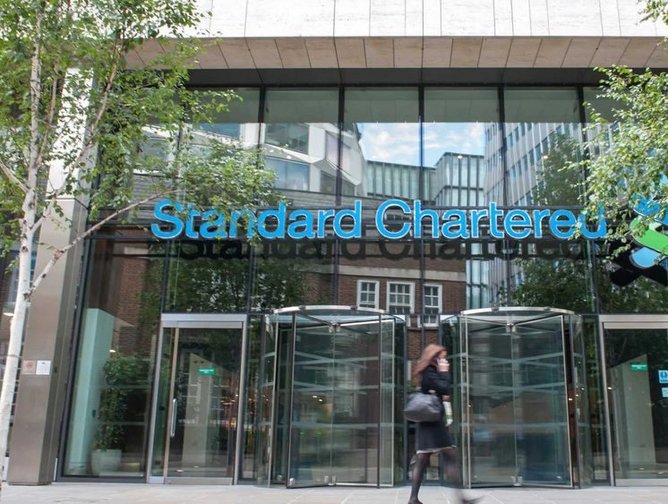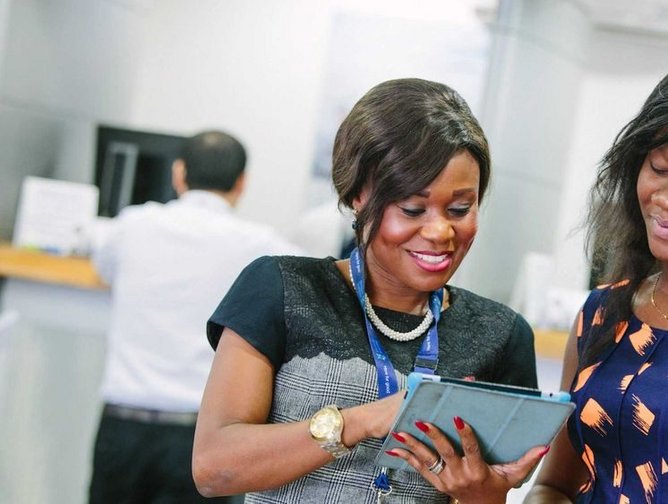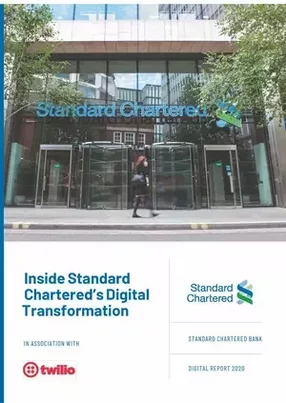Inside Standard Chartered Bank’s digital transformation
The global banking industry is undergoing a period of seismic change. As the pace of Industry 4.0 accelerates, new players are entering the market. From small scale, highly agile fintechs to global technology conglomerates, the fintech revolution is providing new alternatives to customers in every market, and presenting legacy players with new, unique challenges. If legacy banks are to avoid disruption, then these institutions have to both trade upon their unique advantages, while also embracing a new, digitally-driven paradigm.
With over 15 years of experience working to shape the digital channels of some of the world’s foremost financial institutions, Alan Chiew, Head of Technology, Digital Channels at Standard Chartered Bank, is acutely aware of the way the wind is blowing. “Digital Banking has clearly come a long way in the past 10 years. Customers are becoming increasingly sophisticated with what they want digitally from their bank,” he explains. “We’re no longer just compared against other banks’ apps, but also against leading apps across all industries – Spotify, Netflix, WhatsApp, etc. This keeps us on our toes, having to constantly improve not just the customer experience, but also the technologies and ways of working that enables us to create a market-leading experience.”
Chiew has held his current position at Standard Chartered for two years now, and previously headed up the team that developed and launched the Lloyds’ mobile banking application that saw meteoric growth. In less than five years, the bank’s mobile banking app had over 10 million downloads and an average five star rating across all major app stores. This has given him a unique insight into the prevailing trends across the fintech space. Today, however, his role sees him tackle a very different set of challenges. “Standard Chartered is a very different bank compared to Lloyds. It’s a slightly smaller bank with fewer digital active customers, but spread across 30 countries around the world,” he explains. “We’re dealing with mobile issues from Uganda to UAE to Hong Kong.” FinTech Magazine sat down with Chiew to talk about what makes Standard Chartered unique, and how the banking group is embracing both digital and cultural transformation in order to ensure its survival and success.
Unique business; unique challenges
Standard Chartered holds a unique position among banking institutions. The organisation combines a venerable history with a diverse, global operation. The company has been in operation for more than 160 years, and today is present in more than 60 markets across Asia, Africa, Europe, the Middle East and the Americas. It operates more than 1,000 brick and mortar locations, employing more than 85,000 people from 125 different countries. That diversity, Chiew explains, is simultaneously the bank’s greatest strength and presents some of its greatest challenges.
“We’re uniquely positioned in some of the fastest growing and exciting markets around the world. In some countries, we’re the only bank serving that market,” he continues. “We’re a bank with a 160 year history. This provides brand trust and a deep customer base. We play to this strength and partner and leverage technologies where they provide a superior customer and developer experience.” Conversely, the nature of presenting digital offerings across 60 different markets - with widely differing levels of customer expectations, access to technology, regulation and compliance standards, and more - creates no shortage of complications.
“I was very lucky at Lloyds just to be dealing with essentially a single market. Now I’m dealing with 30 different countries,” says Chiew. “In some of the African markets, for example, there are still some really old, legacy technologies that people prefer to use for banking, but in the same market there are people with modern smartphones. We’re having to try and cater to both ends of that technology spectrum. It’s very challenging to deal with such a diverse array of technology stacks, user bases, business requirements, time zones - everything’s different but that’s what makes it so interesting”
Cultural and technological agility
In order to successfully manage digital projects across Standard Chartered’s diverse portfolio of markets, Chiew’s goal is to simplify and rationalise applications, establish standard patterns that both unify the underlying technology that powers the bank’s digital offerings, while also accommodating the wildly different demands of discrete markets.
In order to achieve these seemingly contradictory goals, Chiew stresses the fact that agility, and talent management is key. “Standard Chartered is making a lot of progress regarding enterprise agility. We’re re-organising ourselves into tribes, which is something else I’d had previous experience with,” he notes. “Having already built teams that were delivering agile at scale, knowing what works, where the pushbacks are going to come from, that’s been a big help.”
By practicing agile methodology and working to establish a strong operational foundation for developing new digital products, Chiew’s teams are able to adapt to the diverse demands of operating in different markets. “From a technology standpoint there are a lot of differences in the way we support our different regions. For example, a lot of our customers in Africa still use USSD for banking and there’s a slower rate of adoption of smartphones. To support all of our countries, you’d ideally like a common code base for all your technology, however sometimes that’s not possible,” he admits. “The direction we want to go in is towards a common code base that makes it really easy to develop, test, deploy and automate across all our regions.”
These operational strategies are allowing Chiew and his team to more rapidly explore new technological solutions in greater depth. “Every week we’re trying out new technologies and experimenting with partners,” he says. “In the Customer Identity and Access Management, for example, my team has completed proof of concepts (PoCS) with over 10 vendors this year – looking to accelerate how we onboard customers, capture their digital identity and verify who they say they are.”
As vital as technological evolution is, the success of a digital transformation remains rooted in people. “Technology isn’t the main element; it’s people transformation that’s the key thing,” says Chiew. By moving Standard Chartered towards a more agile way of operating, Chiew is not only involving his teams in “how” to make things, but “what” to make as well. “Traditionally, the business will tell you what you should be building and then the technology team goes away and figures out how to do it and when they’re going to accomplish it,” he explains. “Transformation is also about making the whole team – including the developers and testers - feel like they’re part of the ‘what’ element, not just being told what to deliver by what date and at what cost.”
Another element of Standard Chartered’s transformation stems around reorganising traditional IT structures. Chiew explains that he’s working to eliminate the separation between the bank’s delivery and support functions. “We don’t want one IT team building something that then gets handed over to a different team to do ongoing support,” he elaborates. By ensuring that the team responsible for building a platform, app or feature is also the team that’s responsible for the day to day optimisation, incident management and support, Chiew maintains that it motivates his team to constantly improve. “At the end of the day, it’s going to be you on the hook for solving any problems in the system you built,” he says. “You want engineers that feel like the platform is their baby, not just something that’s been passed off to them by someone else.”
Pressure from above and below
Standard Chartered’s digital transformation is a necessary process as the global banking industry becomes increasingly reliant on technology, and new players enter the space to erode the market shares of legacy organisations.
Chiew explains that traditional financial institutions like Standard Chartered face pressure on multiple fronts. “There’s pressure from the bottom from the fintech startups. They’re agile, nimble, well-funded and they can move at pace because there are only one or two key people making the decisions. They’re pretty rapidly building up their customer bases,” he reflects. “Then, from the top there’s pressure from the Googles, Apples and Amazons of the world. They have incredibly deep pockets. They wanted to get into payments, and we’ve seen that happen in just the past few years. If they wanted to compete in Retail Banking they could as well.” He explains that Standard Chartered finds itself in the middle. “We’re a traditional bank with 160 years of heritage. With that comes legacy technology, and the pace that we move is obviously slower than the companies pressuring us from the bottom and the top.” If the bank is to weather these storms, it will have to transform itself into an entity that’s ready to compete for the next 160 years of its history.
One area where Standard Chartered is expanding is the entry of virtual banks into numerous global markets. “It’s a major shake-up of traditional retail banking,” says Chiew. “We’re actively taking part in this with virtual banks, new digital banks in markets in Africa and our latest offering, ‘banking as a service’, which enables other companies to offer banking products to customers through their own channels.”
An agile, digital future
Going forward, technological, cultural and operational transformation is going to be at the heart of Standard Chartered’s success. If this 160 year-old bank can continue to leverage its trusted, iconic brand, and leverage everything that Industry 4.0 has to offer, Chiew is confident that the future looks very promising. “There’s a lot of trust in our business. We’ve been operating for a long time and one of our brand promises is that we’re ‘here for good.’ We need to press forward with the way we develop, build and bring stuff to market, and I’d say Standard Chartered is definitely pivoting right now towards being a digital, agile and modern bank.”





